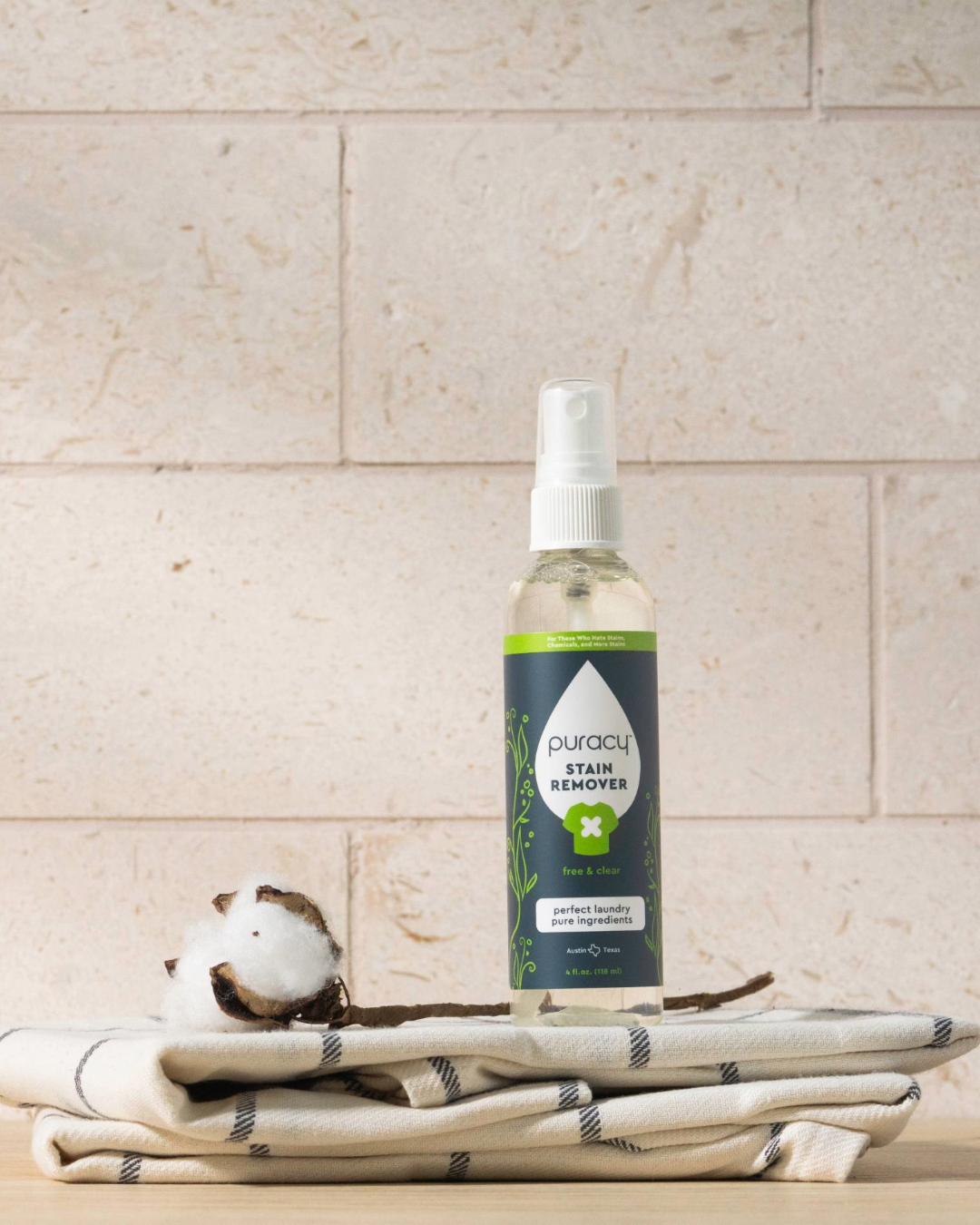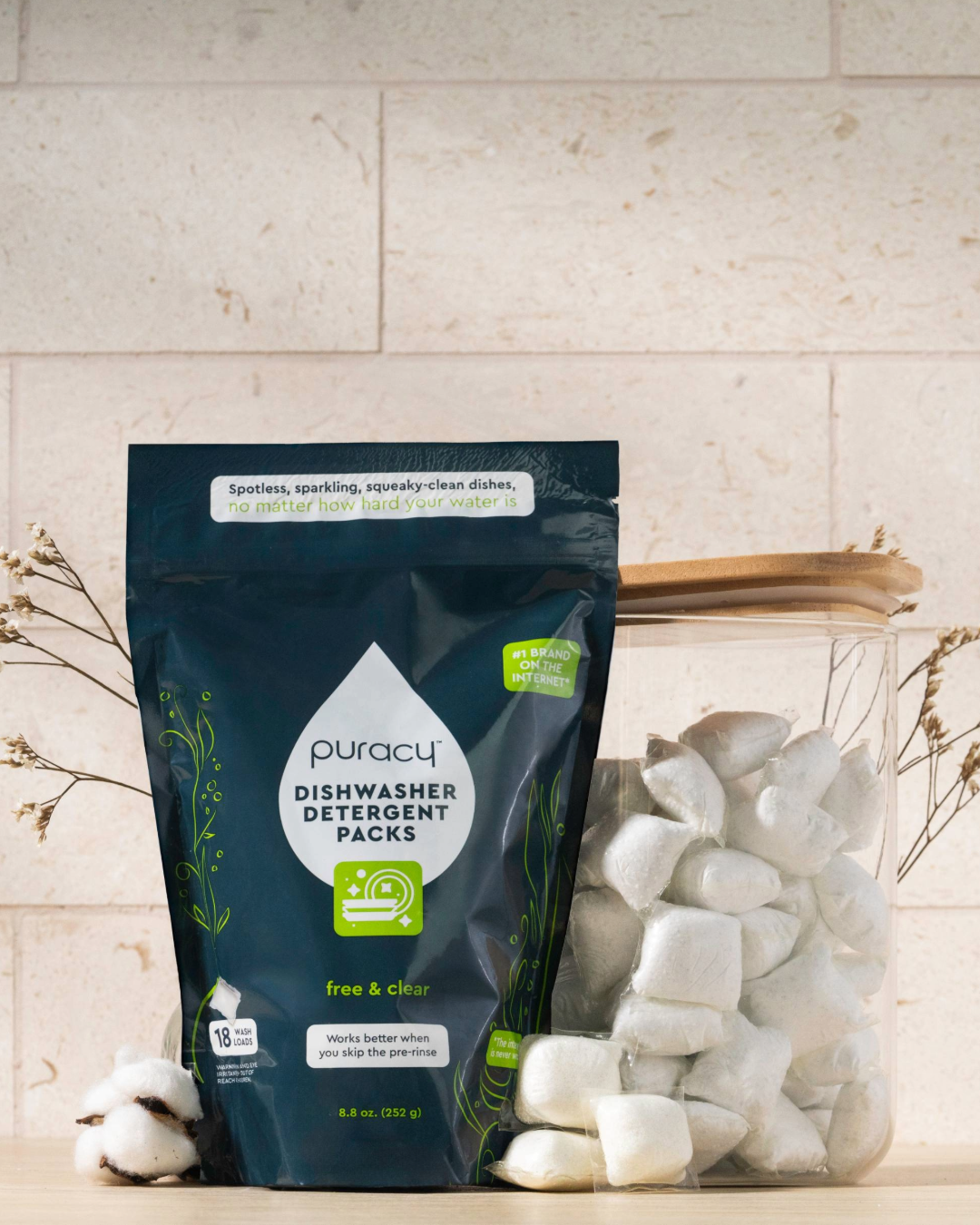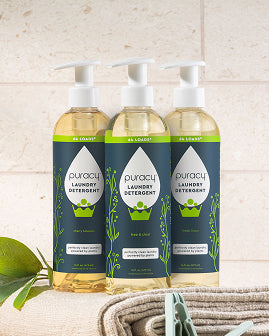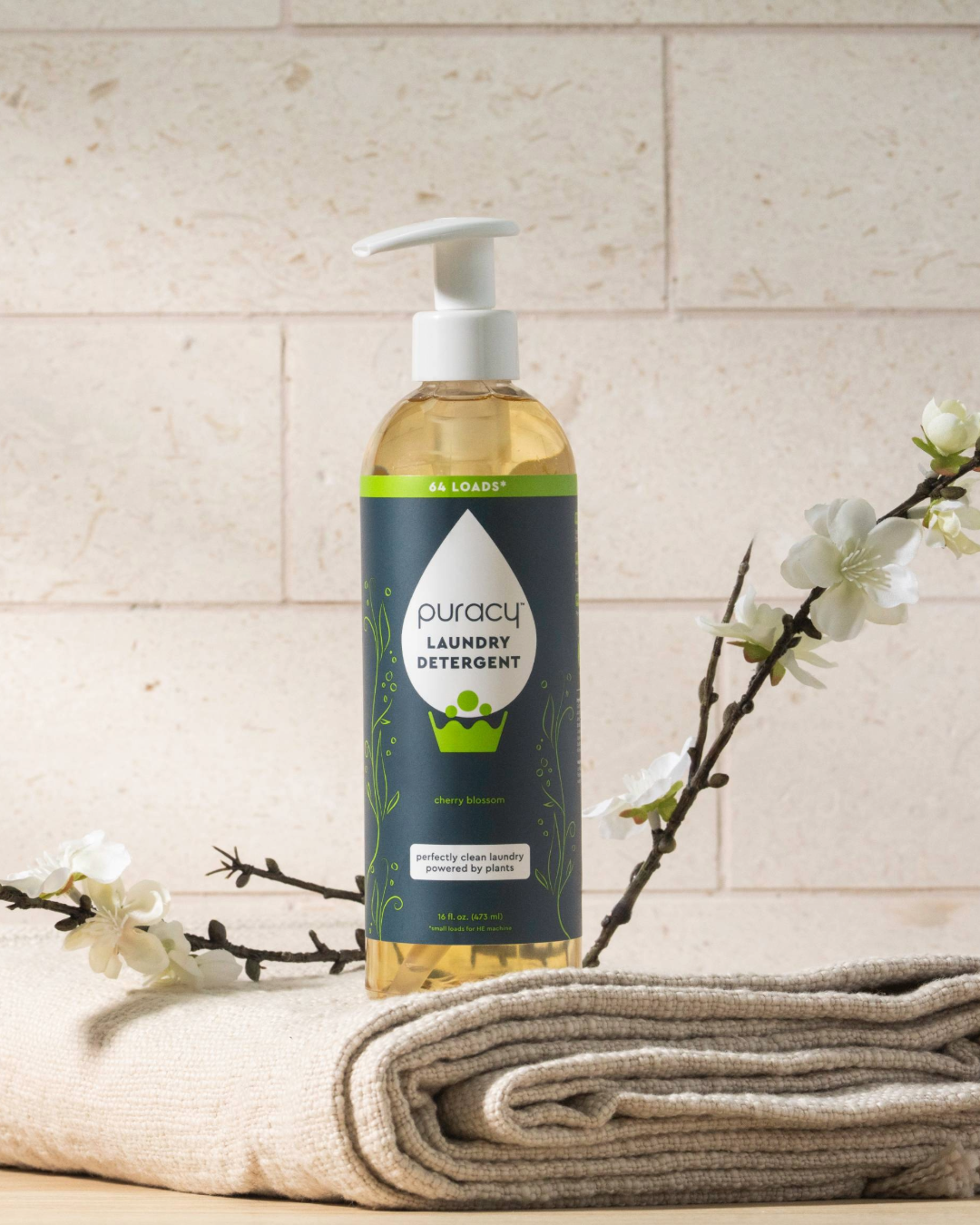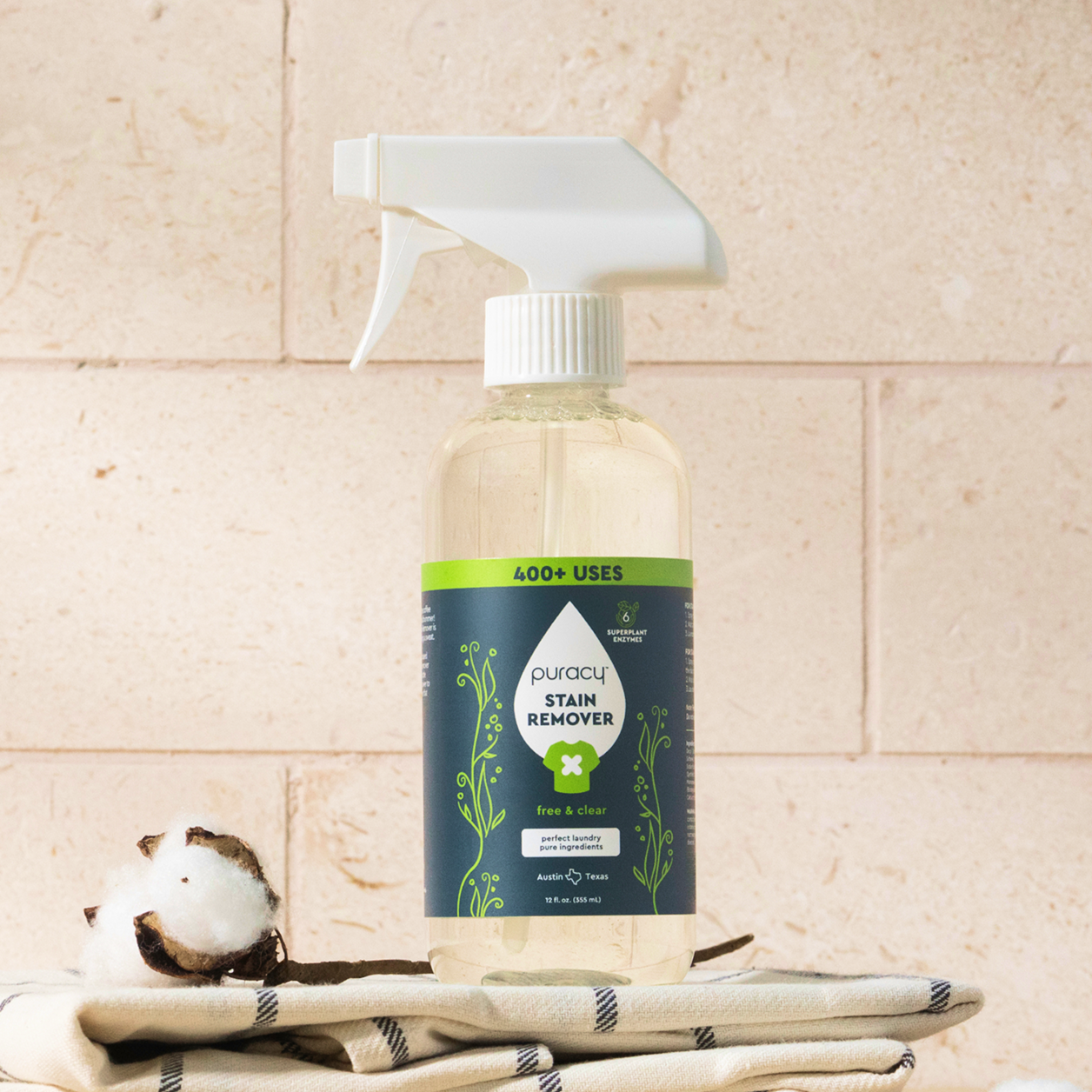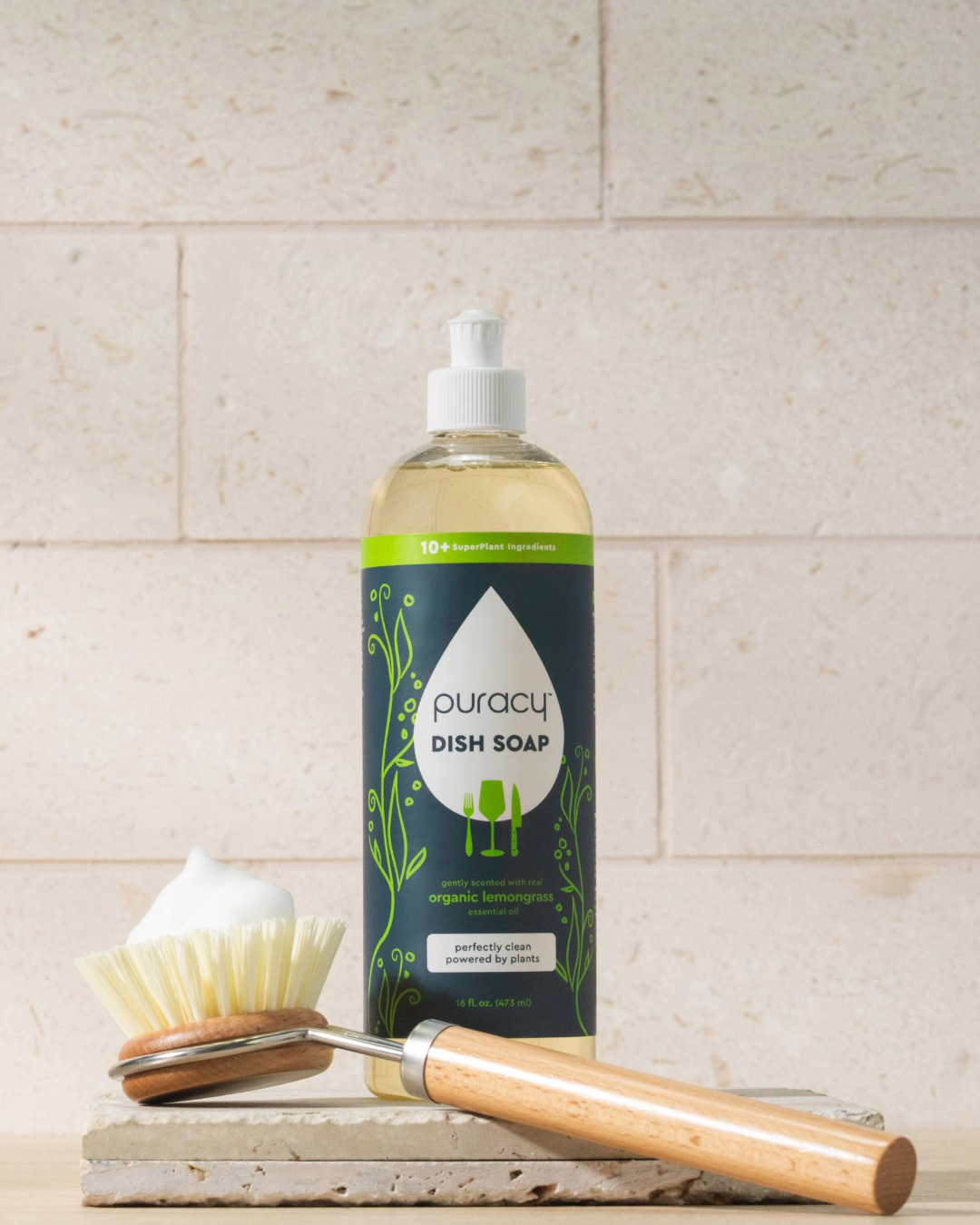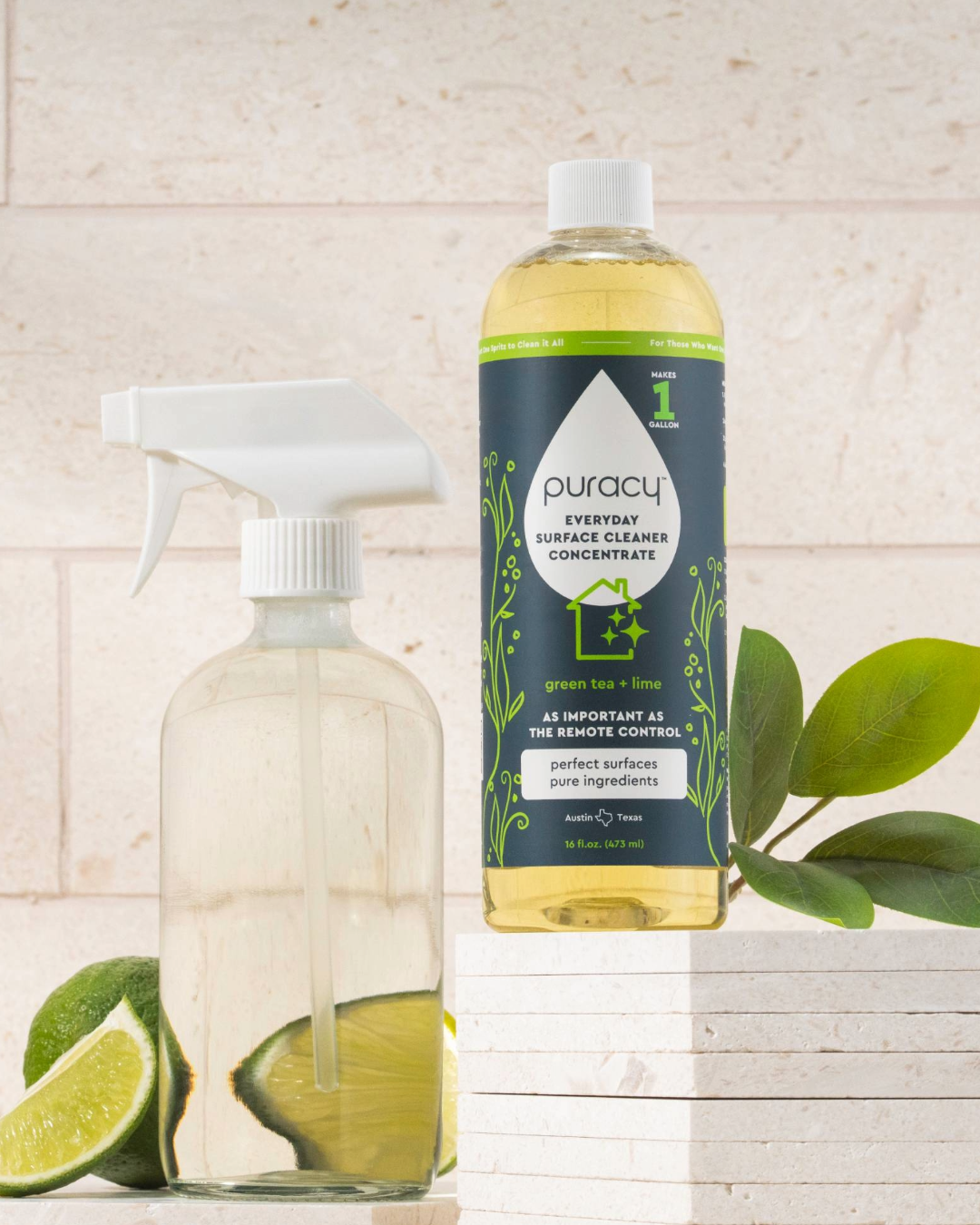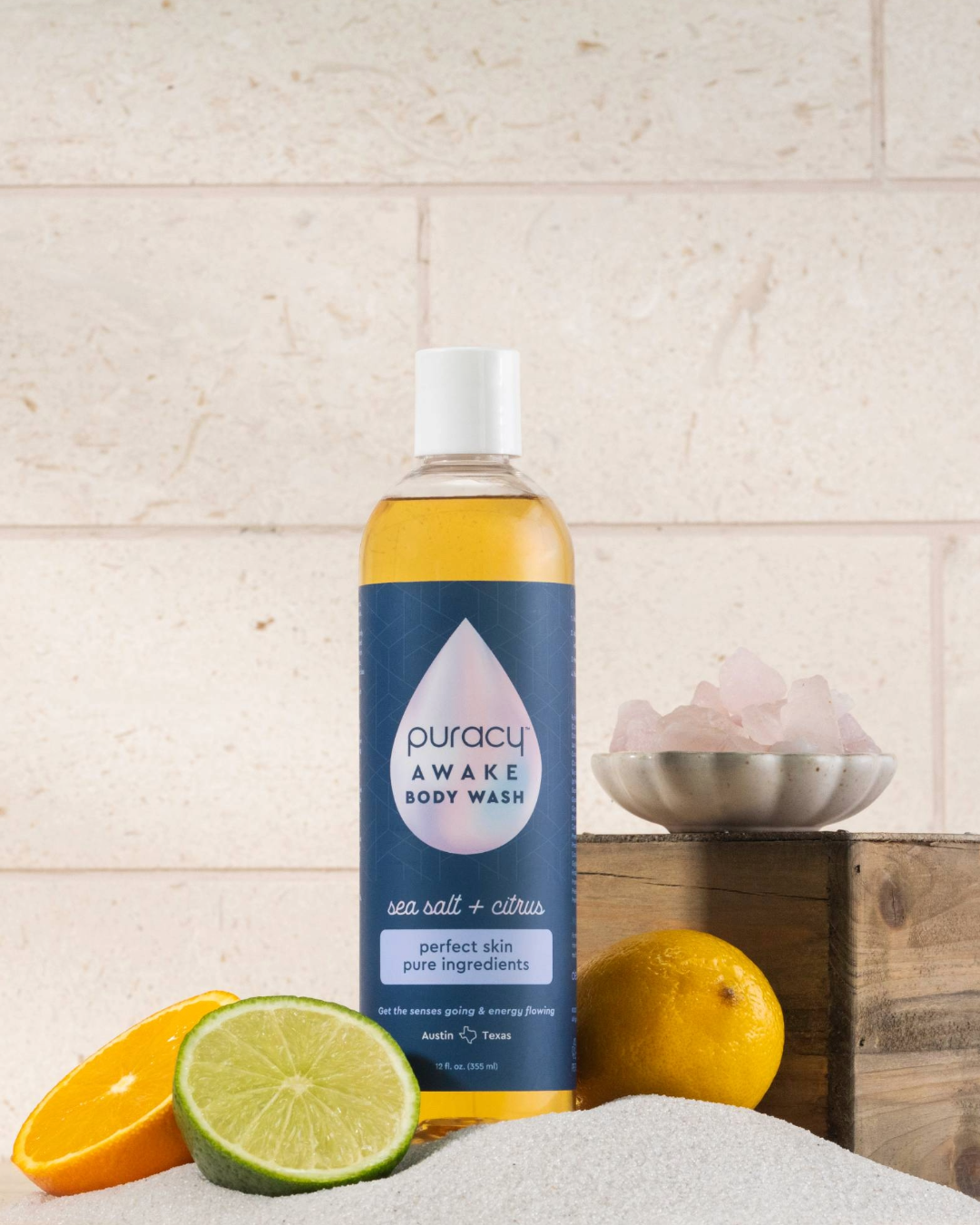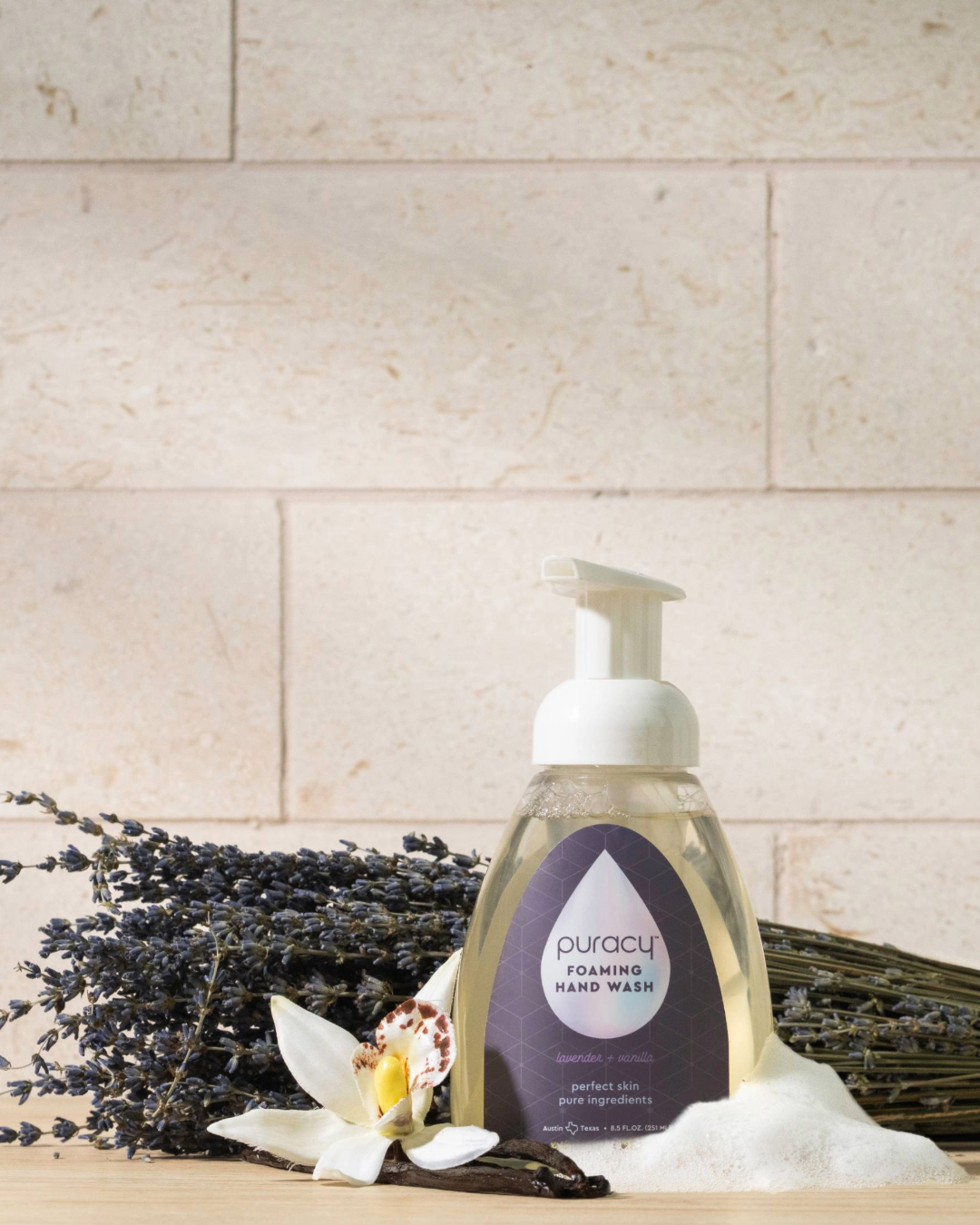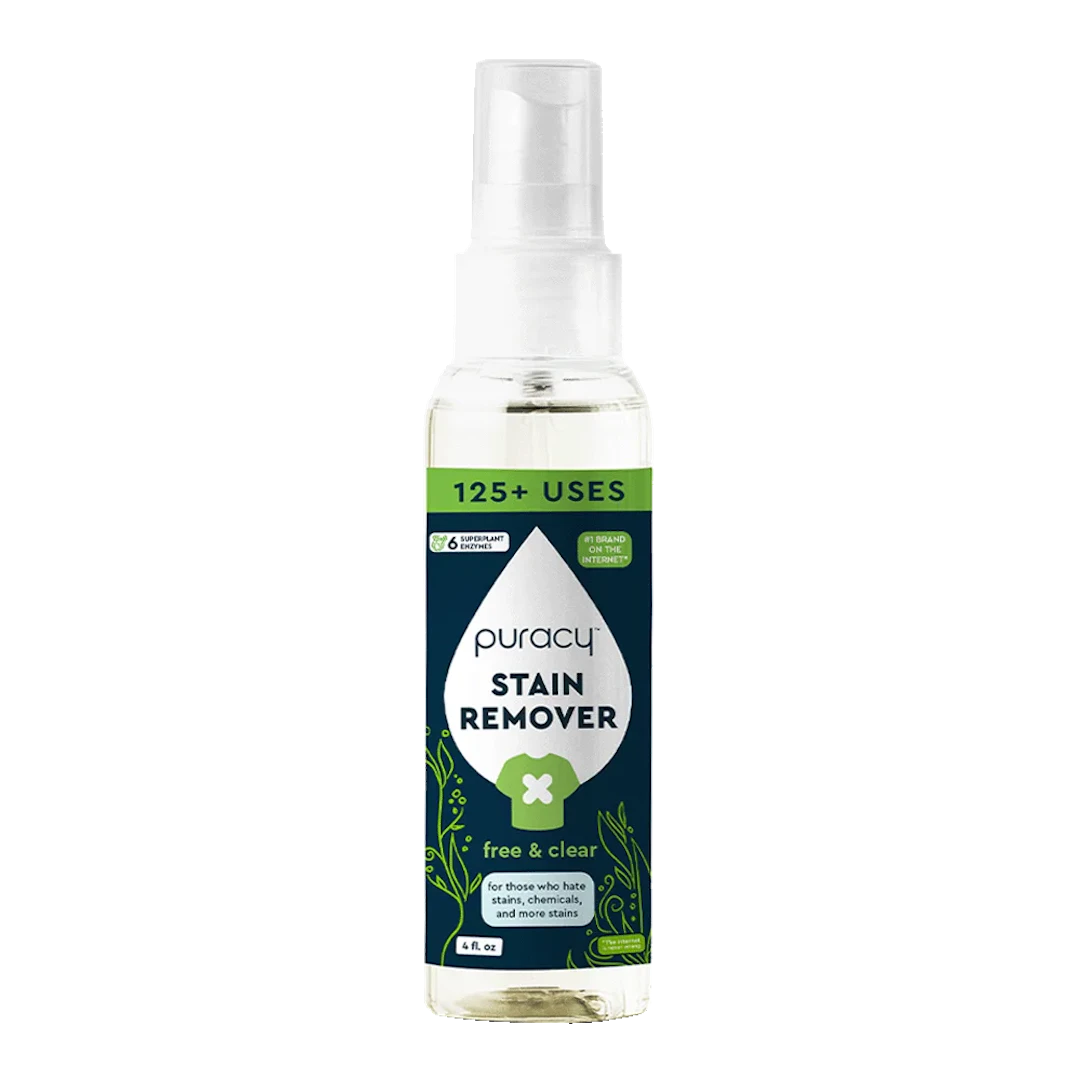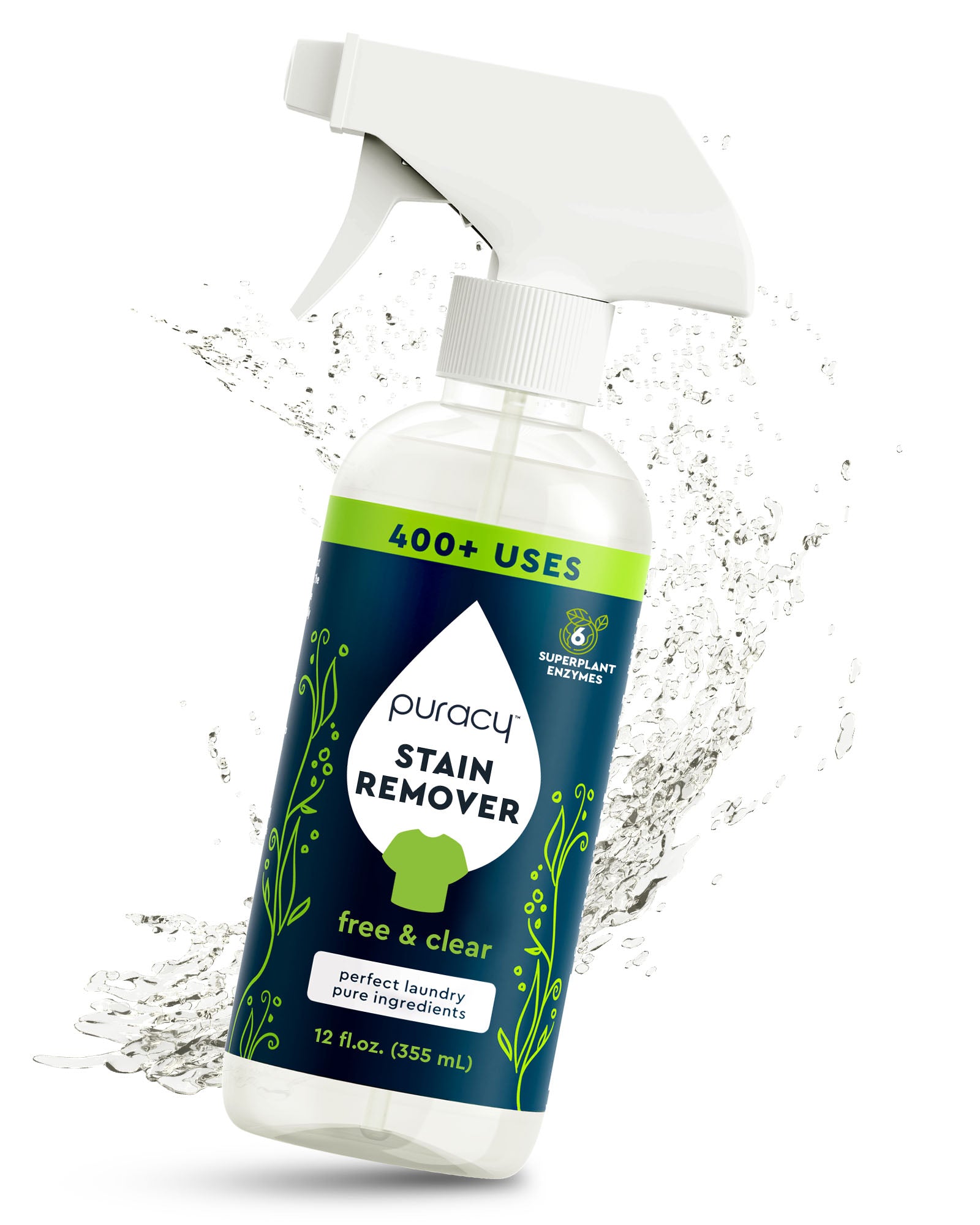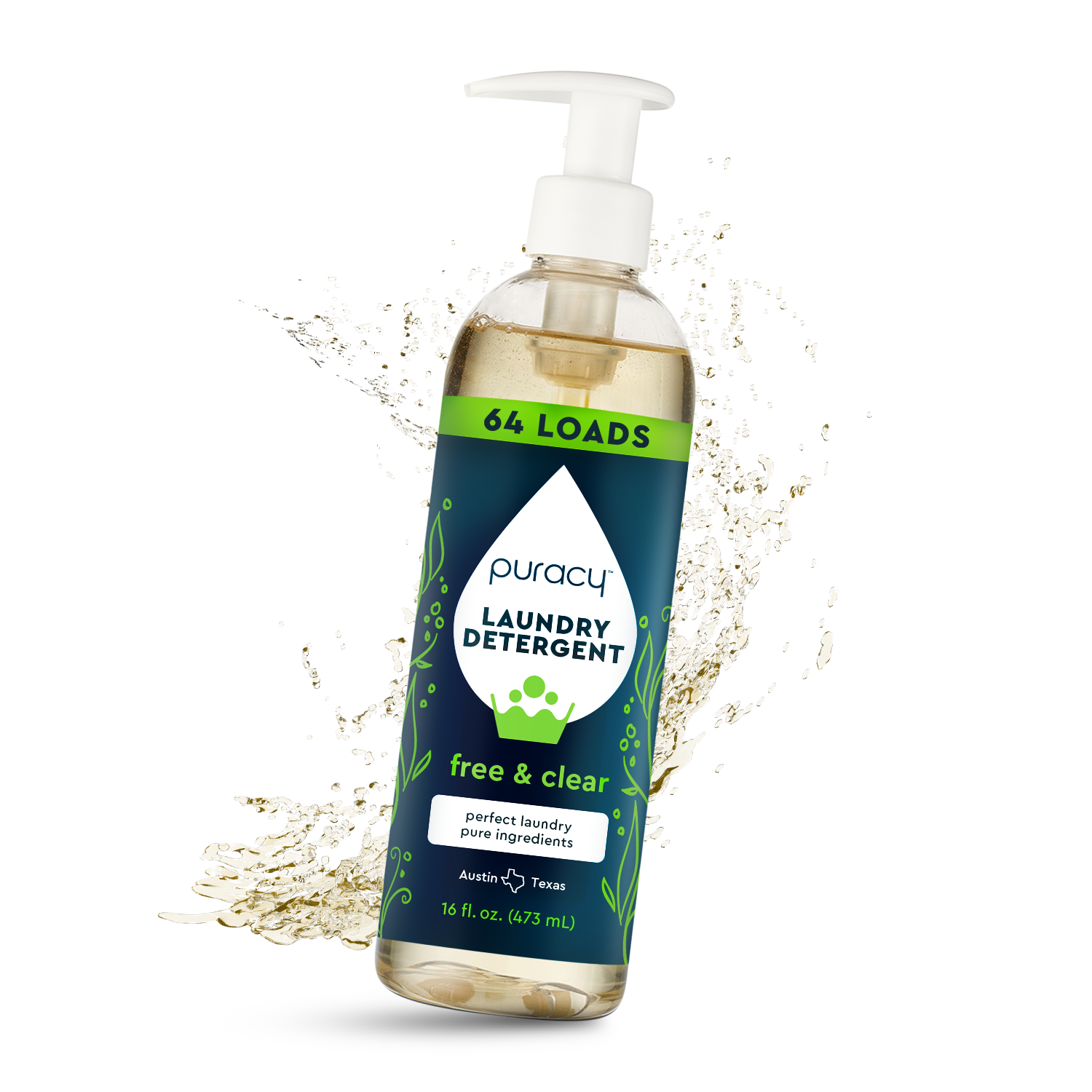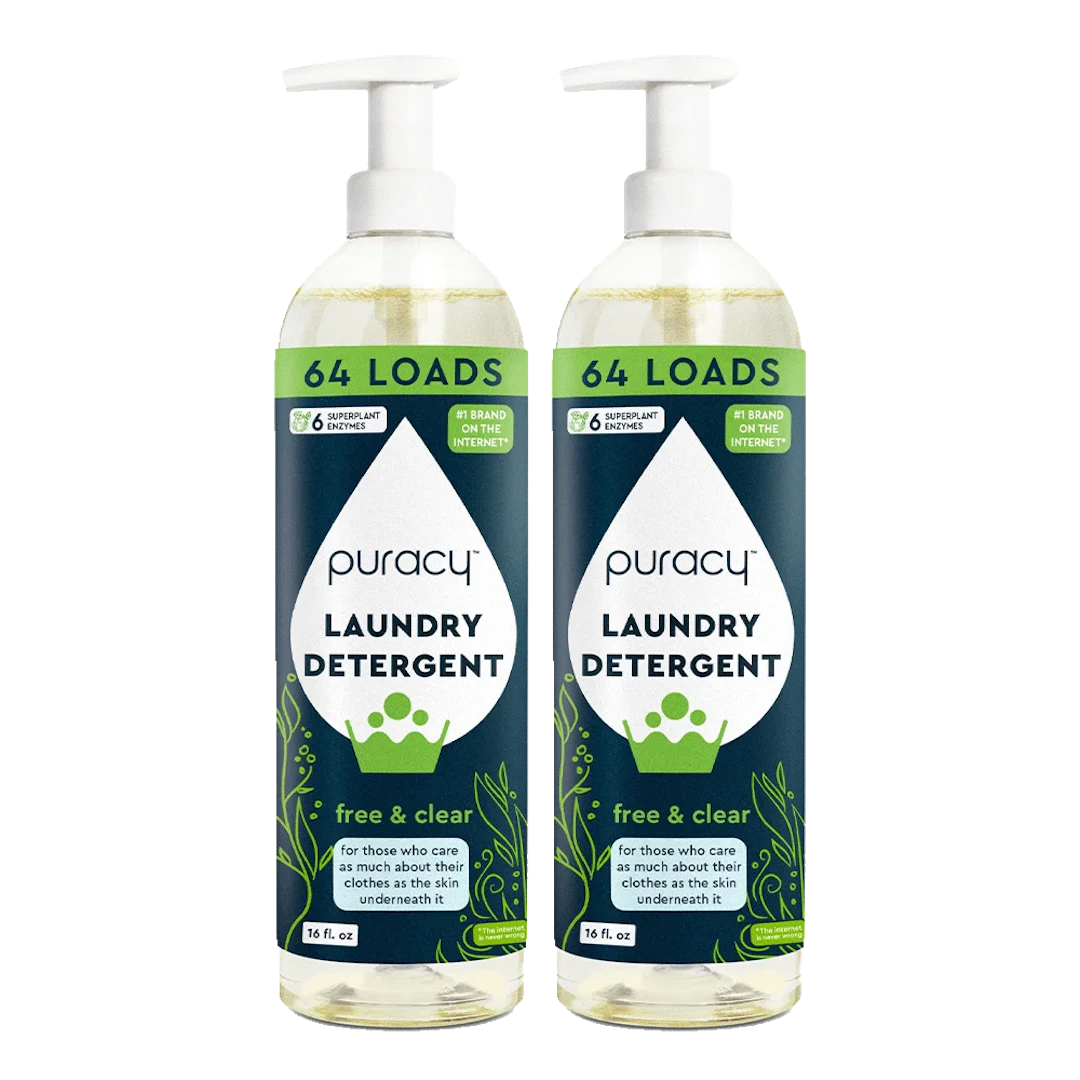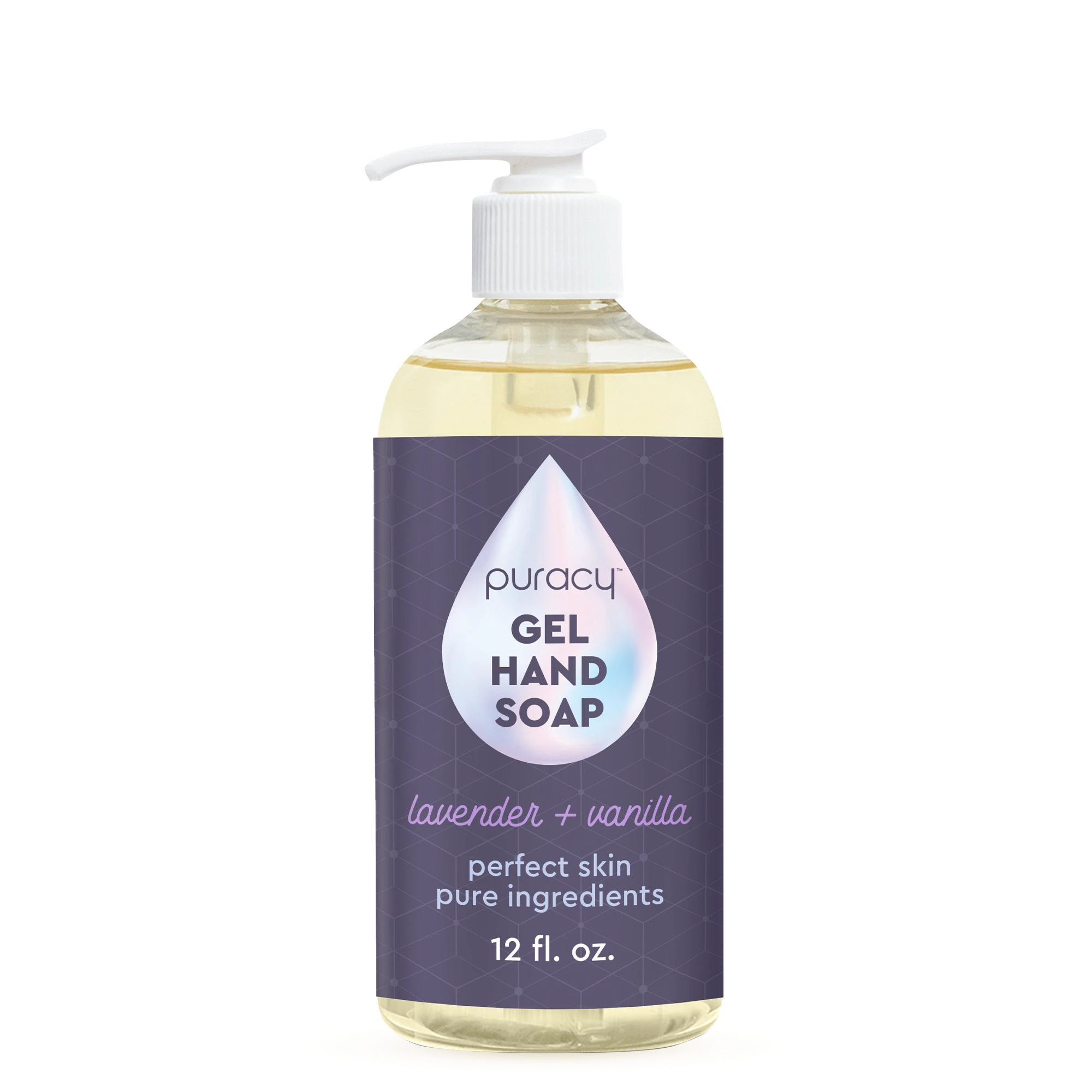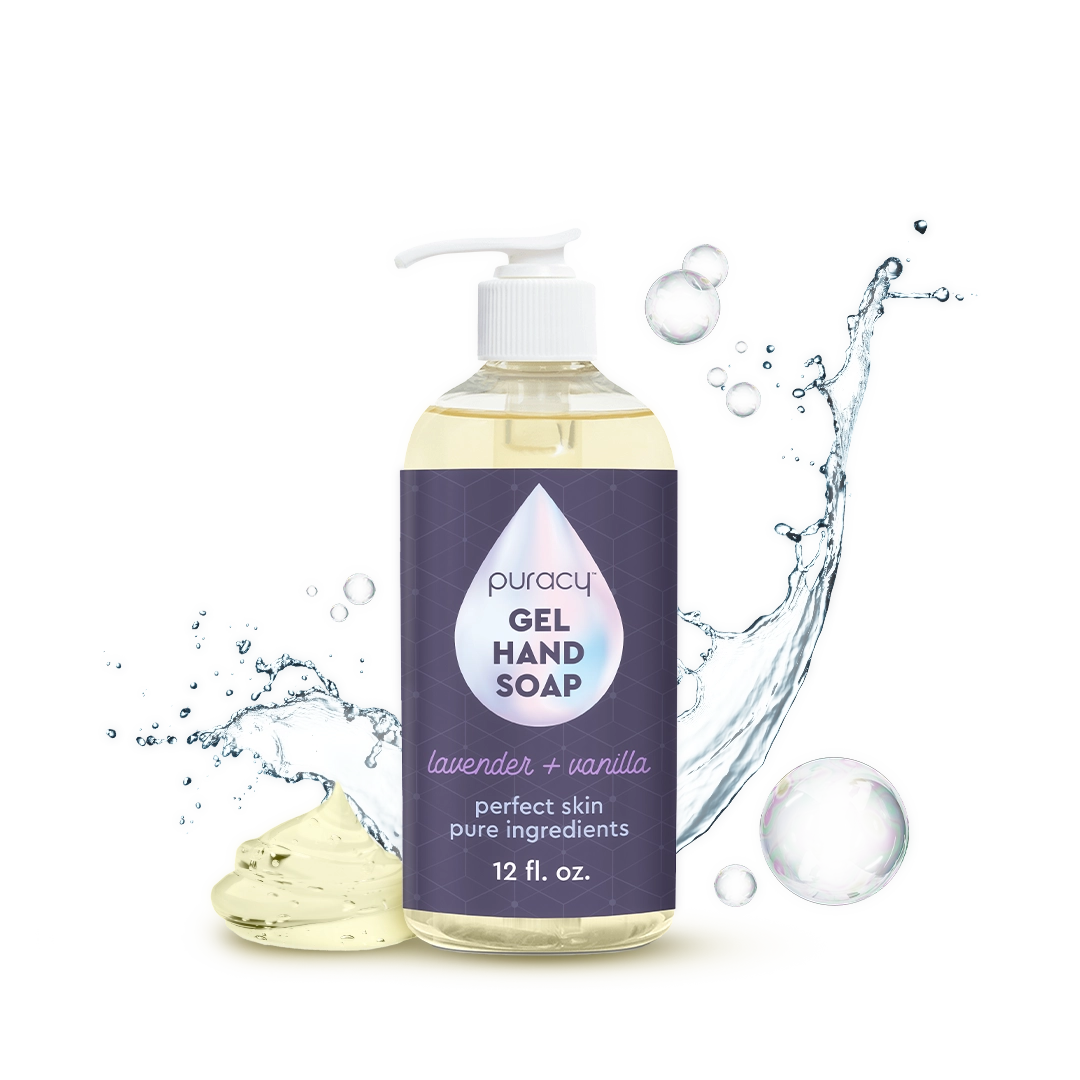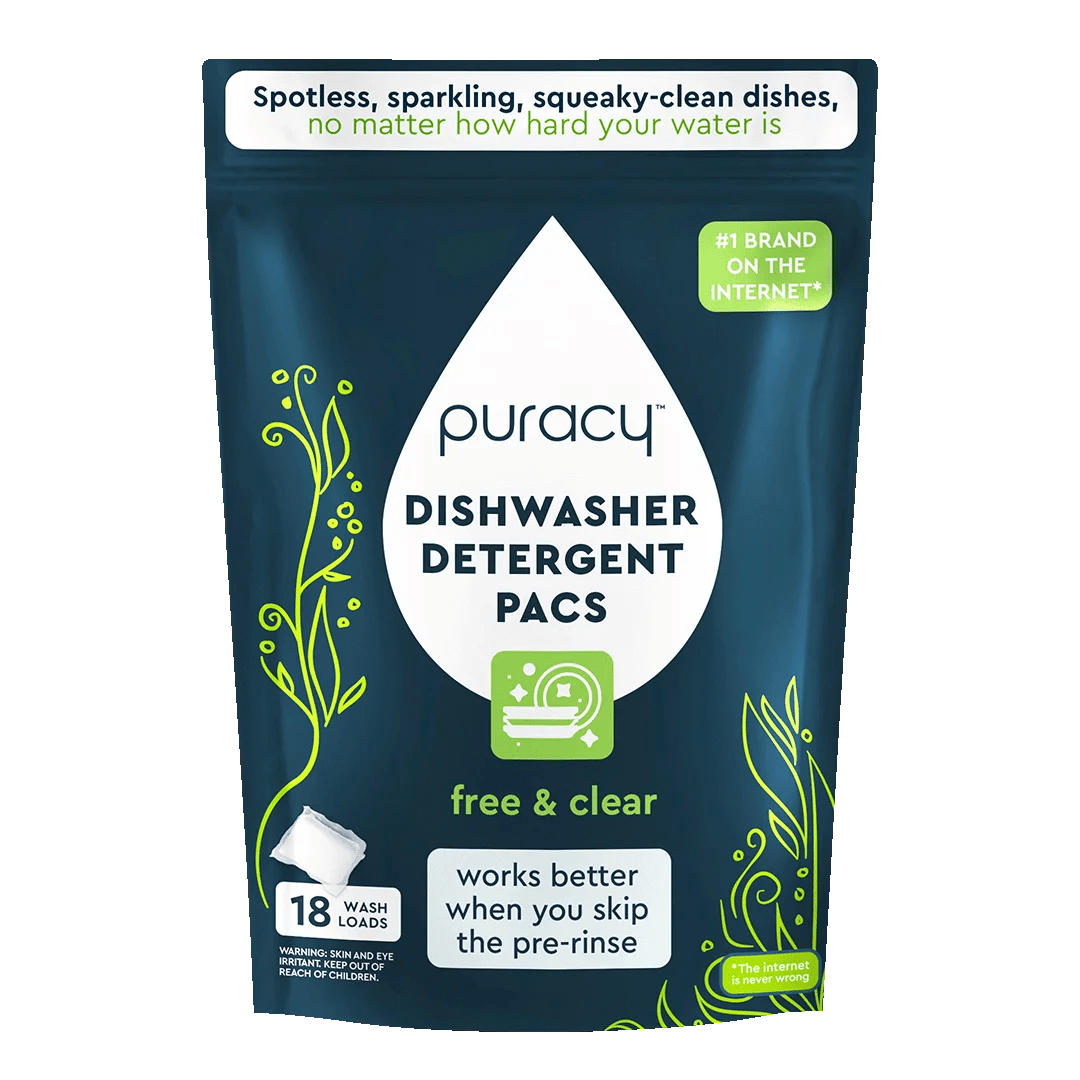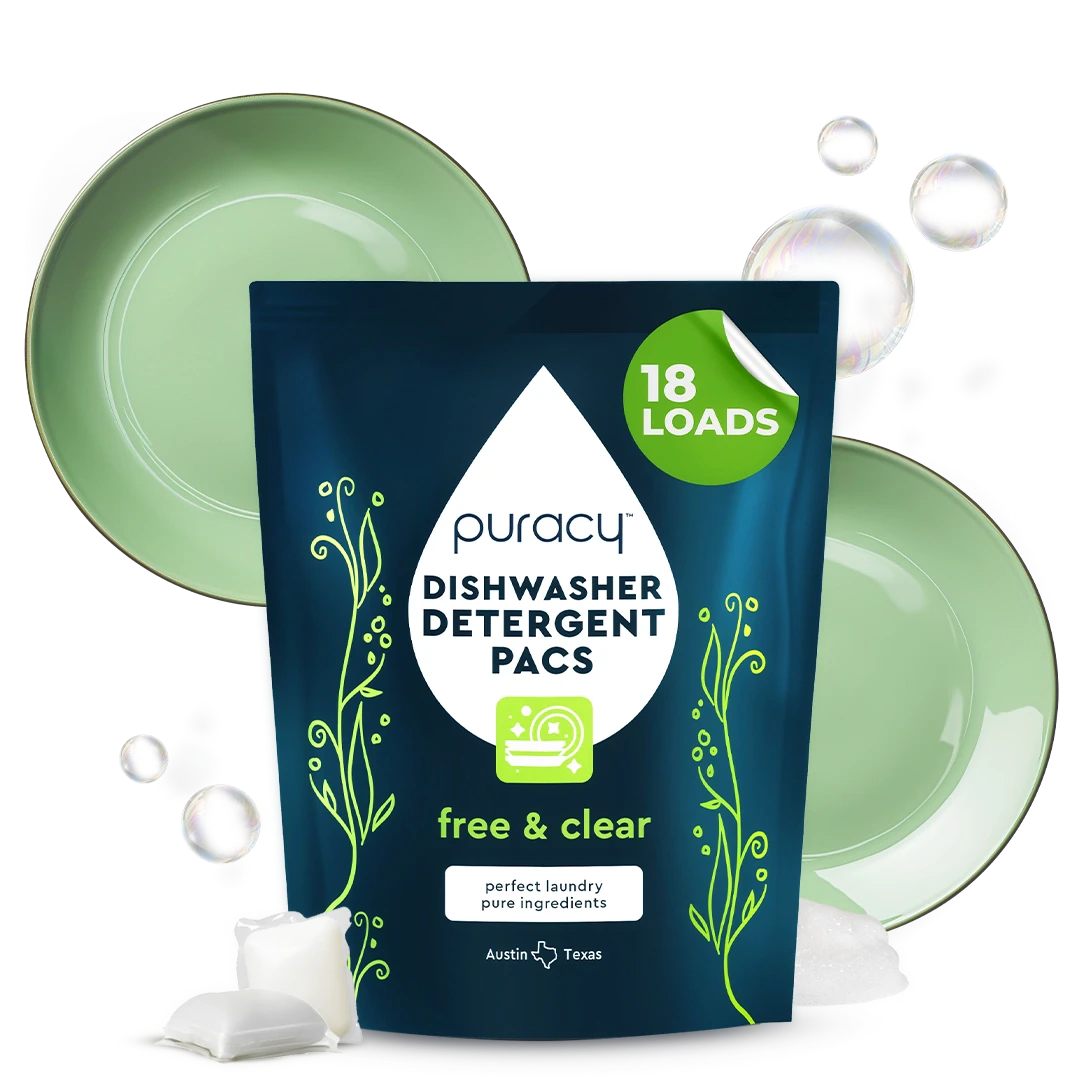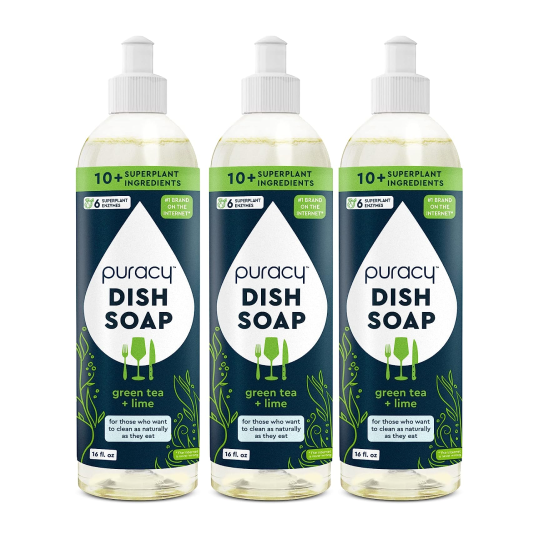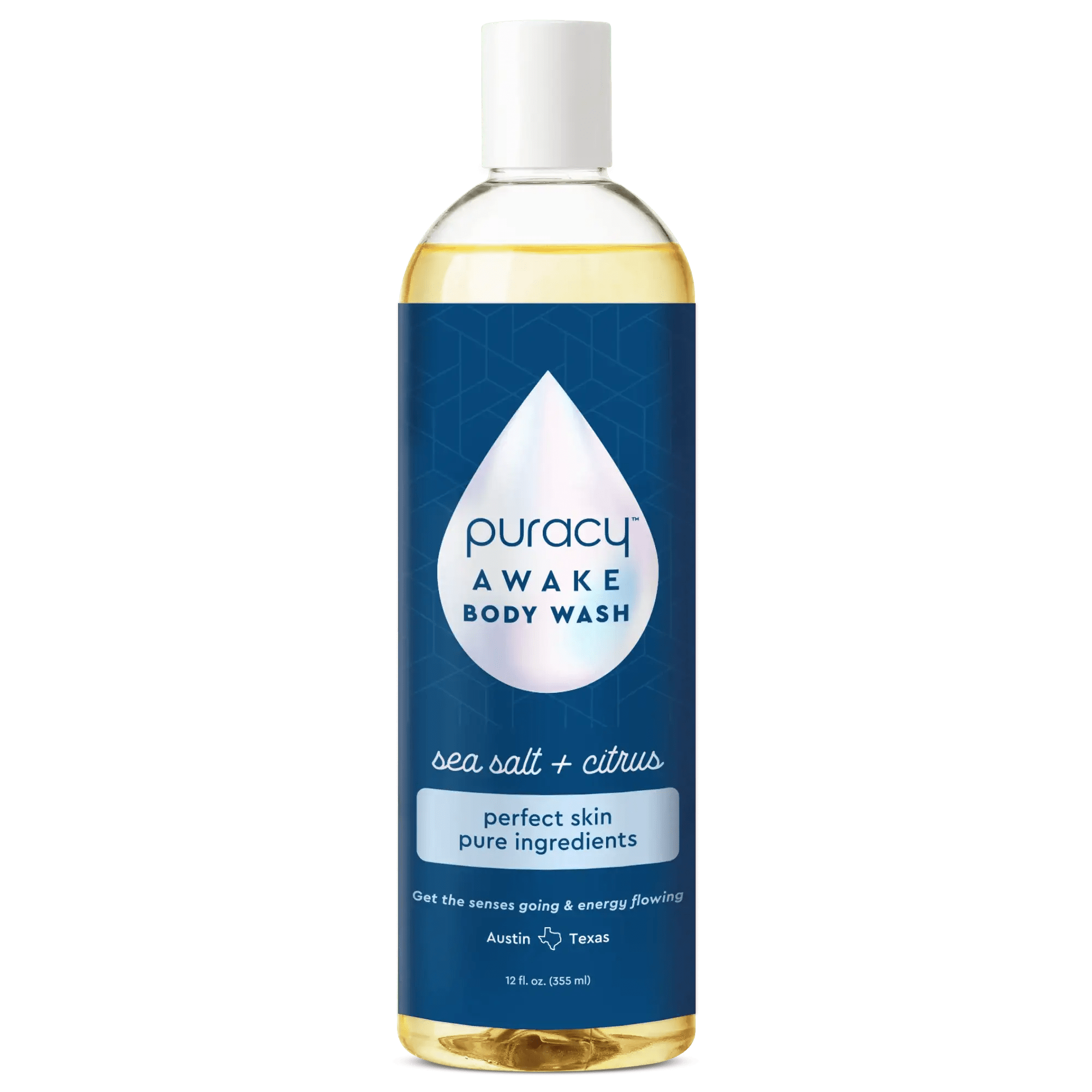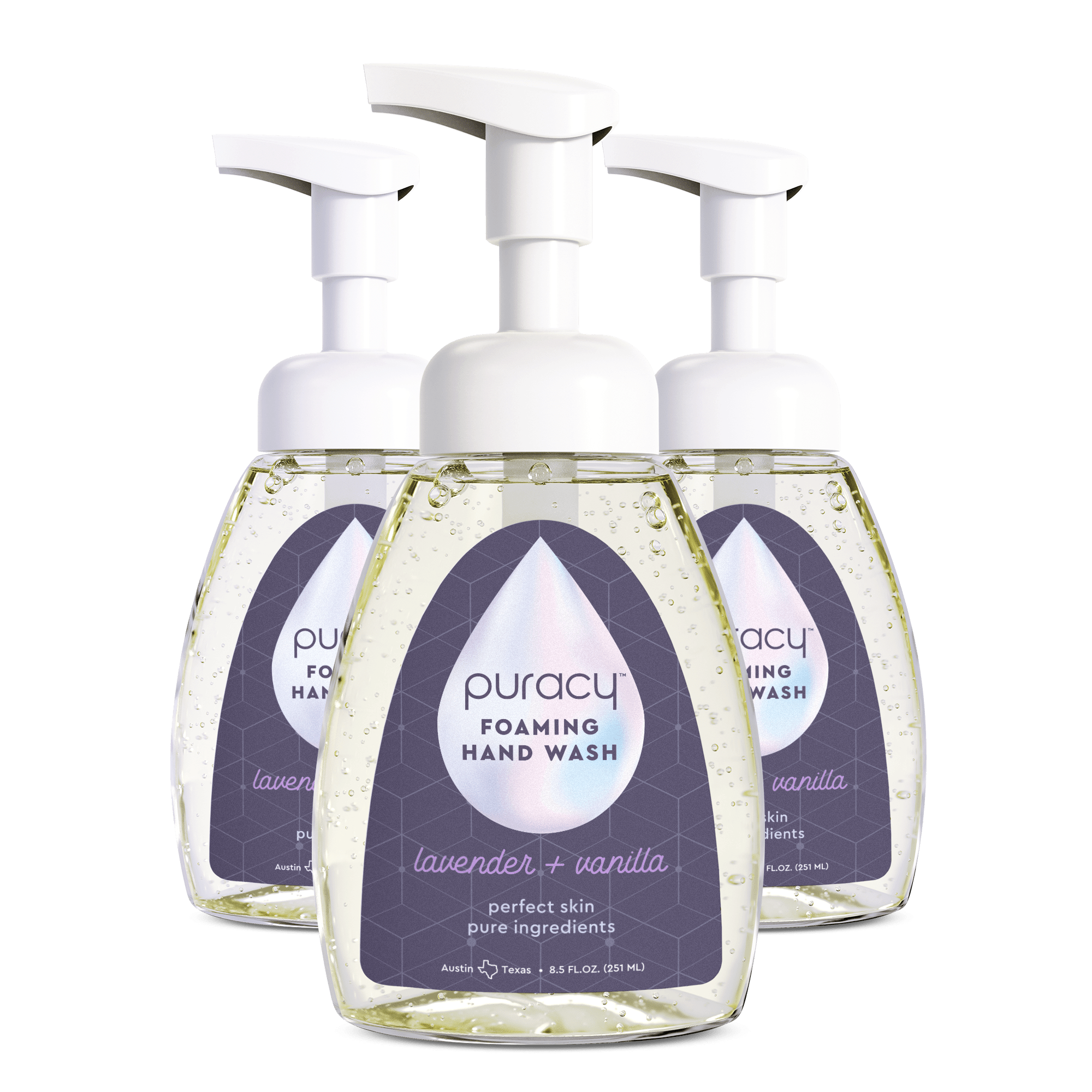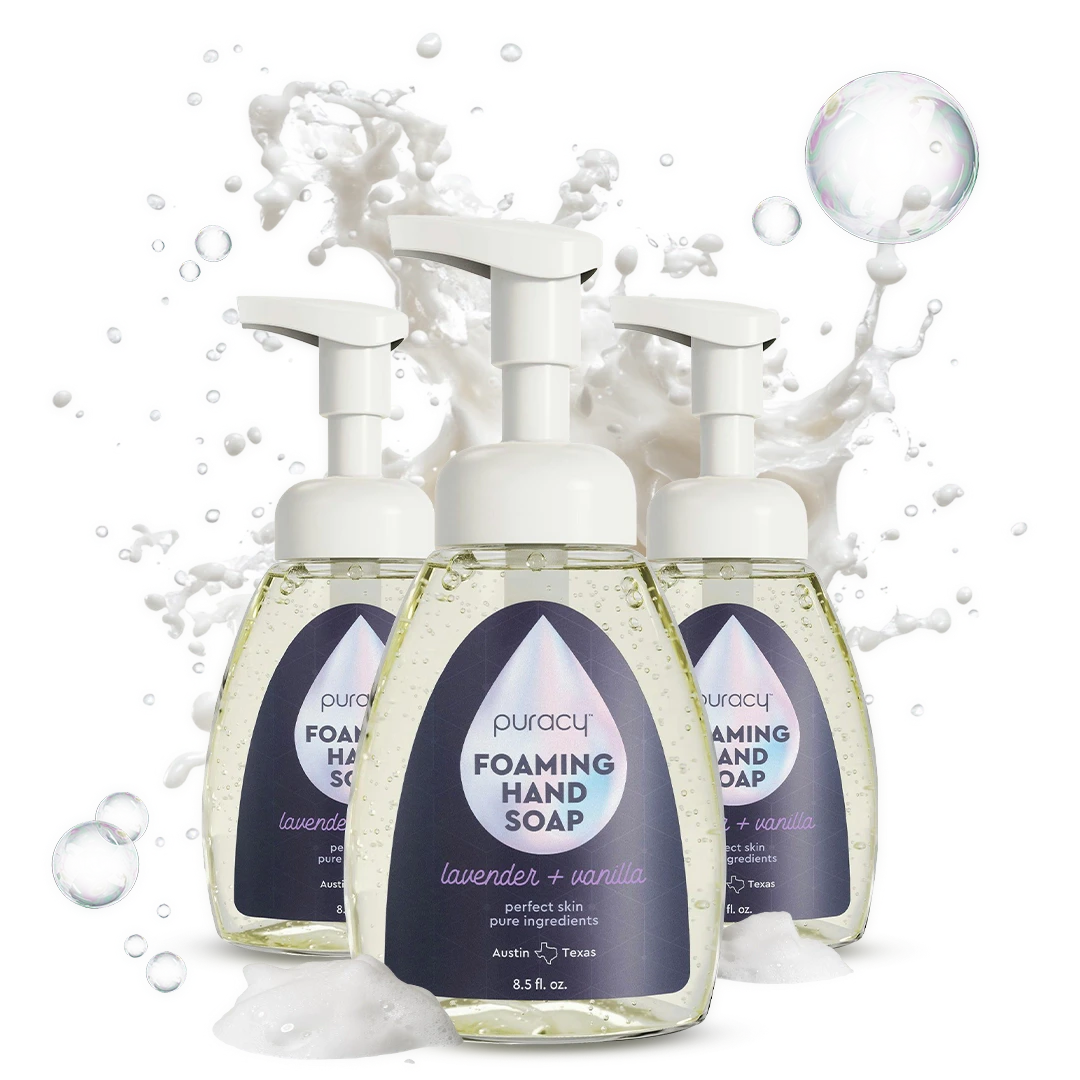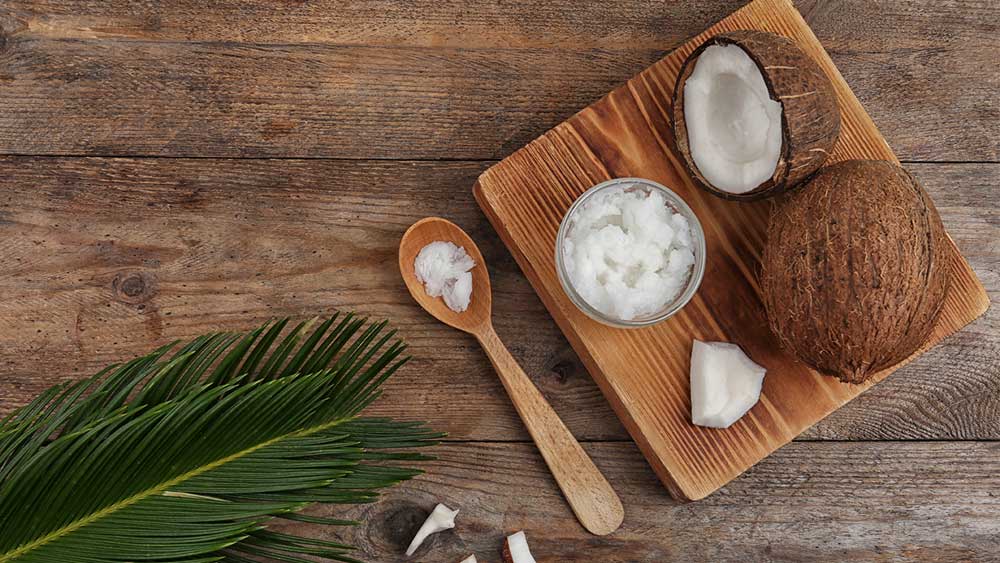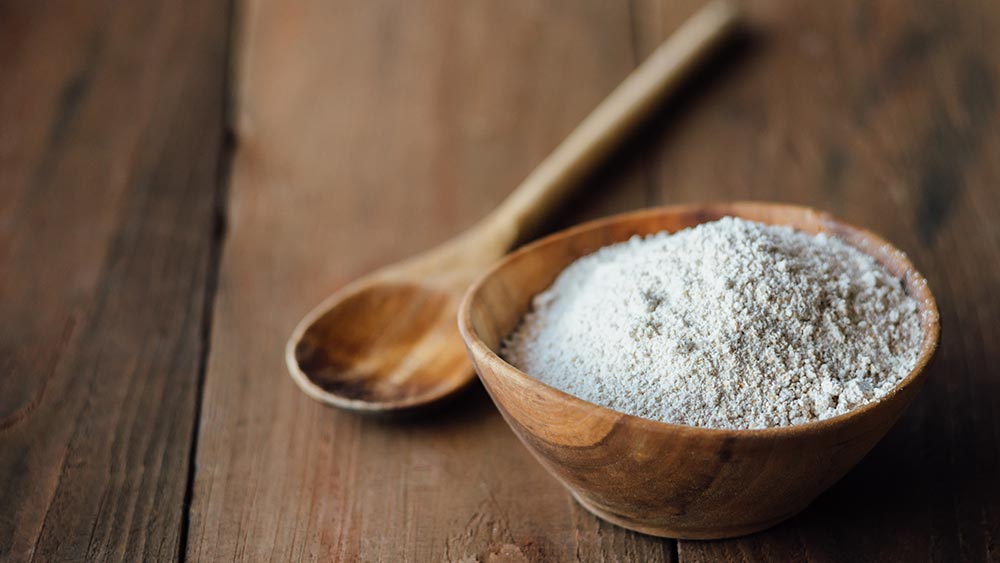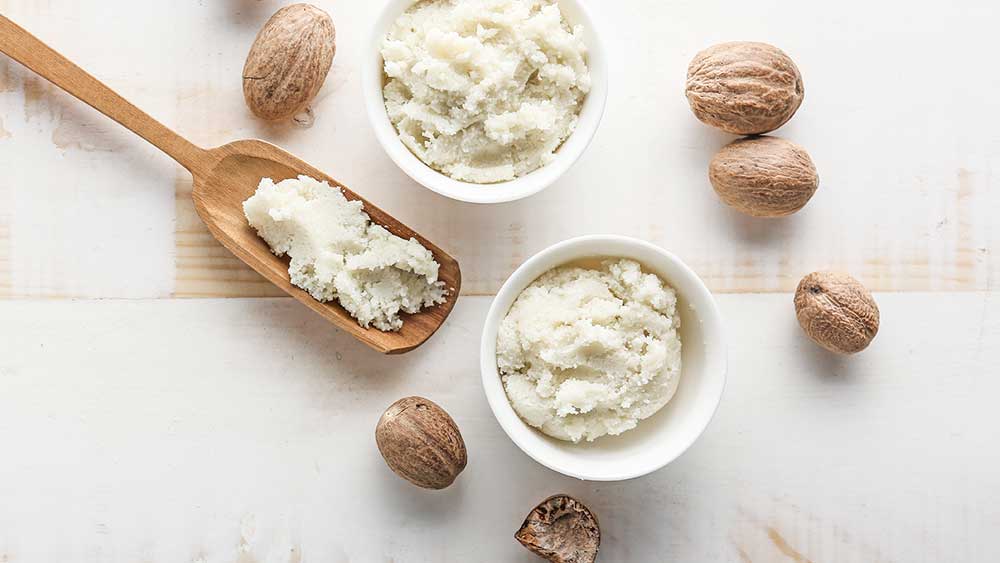
Butyrospermum Parkii (Shea) Butter
What is butyrospermum parkii? Are shea butter allergies common? Learn why Puracy uses this ingredient in our skin & hair products!
- Derived from: shea nuts
- Pronunciation: (Byew-ty-ROS-permum/ PAR-kee-eye)
- Type: Natural
- Other names: shea butter
What Is Butyrospermum Parkii?

Butyrospermum parkii (shea) butter is a natural moisturizer that's widely used in cosmetics, bath products, makeup, lotion, and hair care products.[1] It is extracted from the nuts of the shea tree (Vitellaria paradoxa) and has been used for centuries in Africa for its moisturizing and healing properties.
Other names for shea butter may include: karite, carité, butirospermo, and vitellaria paradoxa.
What Does Butyrospermum Parkii Do?

Butyrospermum parkii helps bind moisture.[5] Shea contains vitamin E and catechins, which are also found in green tea. As an emollient, it helps soften skin, help with the effects of skin aging, condition hair, and even moisturize cuticles.[6,7,1]
Shea butter is a rich source of fatty acids, including oleic acid, stearic acid, and linoleic acid. These fatty acids have many beneficial properties for the skin, including:
This emollient can lock in moisture to keep skin hydrated and conditioned to prevent dryness. In a study conducted to find out its effects on skin, it has been shown to be generally well-tolerated in people with sensitive skin.
It has been shown to soothe the skin and have wound-healing properties. It also helps promote growth of new skin cells and reduce inflammation.
It can help to protect the skin from the sun's harmful rays. Its anti-inflammatory and antioxidant properties can help to protect the skin from damage caused by free radicals.
There are anecdotal reports of shea butter being used to remove dark spots or lighten skin, but there isn’t much evidence to support it. It is more popularly known for the above-mentioned properties.
How Butyrospermum Parkii Is Made

Shea butter fruit is harvested and pulp is removed. After being dried in the sun, smoked over a fire, or parboiled, the fruit is cracked to expose the shea nuts. Once these are removed and dried again, they are ground into a powder that is mixed with water and pressed to yield the shea butter oil. [2]
Why Puracy Uses Shea Butter

Since butyrospermum parkii for skin is prized as an emollient (which fills gaps in skin) and moisturizer, we use organic shea butter in our Organic Baby Lotion. In addition to its smoothing capabilities, Butyrospermum parkii in hair products is ideal for dry, irritated scalps, and that's precisely why our Natural Conditioner takes advantage of its hydrating and smoothing capabilities.
Is Butyrospermum Parkii Safe?

The safety of shea butter has been evaluated by several authoritative organizations, including the Cosmetic Ingredient Review and the Food and Drug Administration. Both organizations have concluded that shea butter is safe for use in cosmetics and personal care products.
The safety dosage of shea butter varies depending on the product. For example, the recommended dosage of shea butter in a lip balm is typically around 5%. However, the recommended dosage of shea butter in a body lotion may be higher, such as 20%.
Safety on Human Health
The CIR evaluated shea butter in a series of studies that were conducted in the 1990s. The studies looked at the safety of shea butter when it was applied to the skin, ingested, and inhaled. The CIR concluded that shea butter is safe for use in cosmetics and personal care products at concentrations up to 45%.
Meanwhile, the FDA considers shea butter to be a generally recognized as safe (GRAS) ingredient. This means that the FDA has determined that shea butter is safe for use in food products.
While it is considered generally safe, there are some potential risks associated with it, including:
The Cosmetic Ingredient Review considers shea butter and shea oil as safe in topical administration. [3] Though Butyrospermum parkii is a tree nut, there is no correlative or published data regarding shea butter allergies.
Interestingly, shea nut butter actually lacks detectable protein residues that other tree nuts (e.g. pecan, walnut) possess.[4] While there is no guarantee that an allergy will not be experienced, allergy specialists believe there is little-to-no risk.[5]
This emollient is not considered to be a comedogenic ingredient, which means that it does not clog pores. However, some people with sensitive skin may find that shea butter does clog their pores.
It may cause skin irritation in some people. If you’re new to a product with shea butter, always do patch testing first.
Safety for the Environment
Shea butter is considered to be a sustainable ingredient. The shea tree is a renewable resource, and the process of extracting shea butter from the nuts does not harm the tree. In fact, the shea tree is an important part of the ecosystem in West Africa, where it provides shade and food for animals.
The production of Butyrospermum Parkii also has a low environmental impact. The nuts are harvested by hand, and the shea butter is extracted using traditional methods. This means that there is no need for pesticides or herbicides, and the process does not produce any harmful emissions.
It is also a biodegradable ingredient. This means that it will break down naturally in the environment, without harming wildlife or ecosystems.
Sources
[2] The Shea Project
[3] Cosmetic Ingredient Review
[4] FARRP
